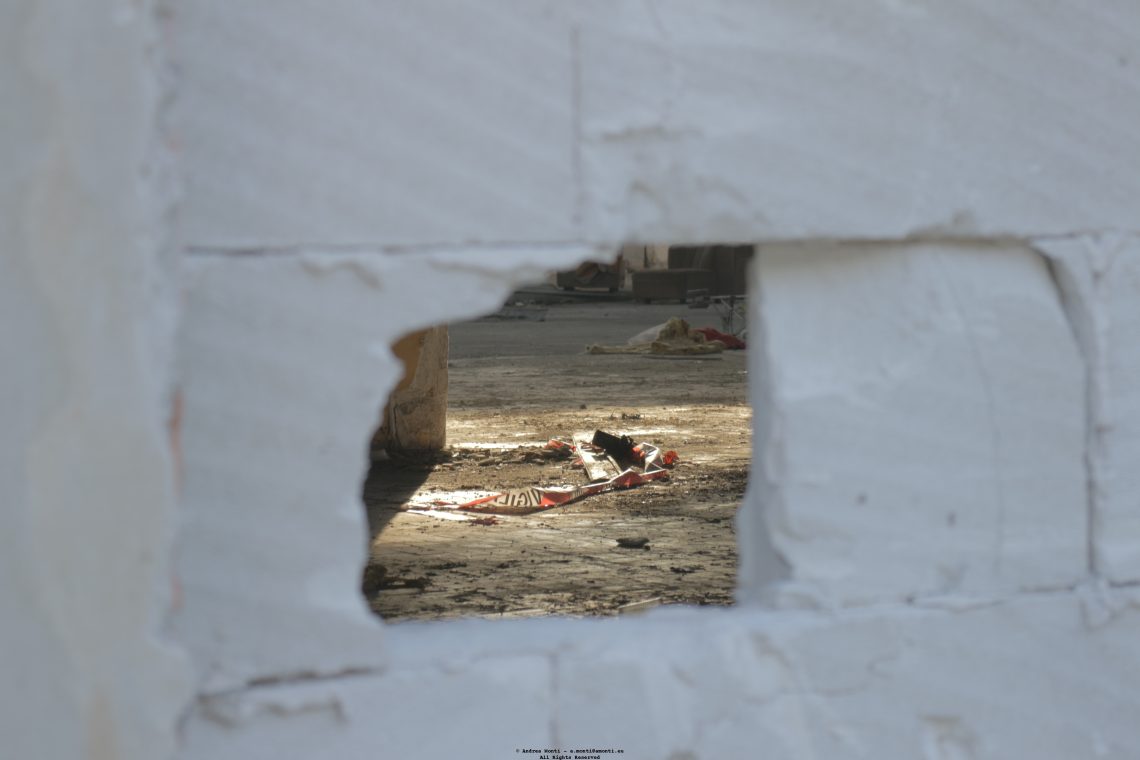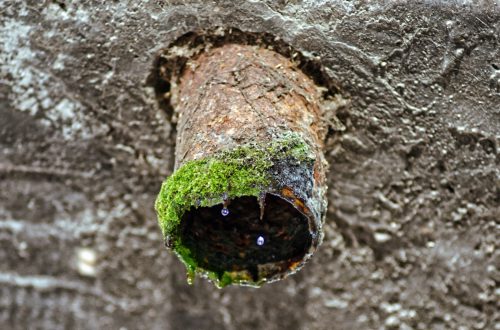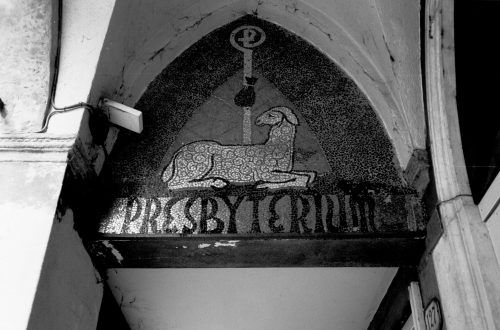
Peeping the Misery
A rough opening in a white wall becomes the frame. The edges are jagged, still bearing the scars of whatever blow created them. Through it, the eye is led into another world—a dusty, abandoned space where sunlight slices across the ground.
On the floor lies a tangle of debris: fragments of cloth, splinters, and what seems to be a torn banner, its once-bright colours now dulled. The text on it is broken, unreadable, a language interrupted. In the background, shapes blur into shadow—remnants of furniture, perhaps, or the skeletal remains of another wall.
This photograph is about looking in without stepping in. The viewer is held at a distance, forced to witness through a wound in the surface. It’s an act of intrusion, but also of preservation. The frame within the frame isolates the scene, making it feel like a memory half-remembered, glimpsed through the mind’s own fissures.
The light does the rest—falling not evenly, but with intent, like a spotlight on what has been left behind. The emptiness beyond the wall is not silent; it hums with absence, with the quiet persistence of places people once cared about, and then abandoned.




